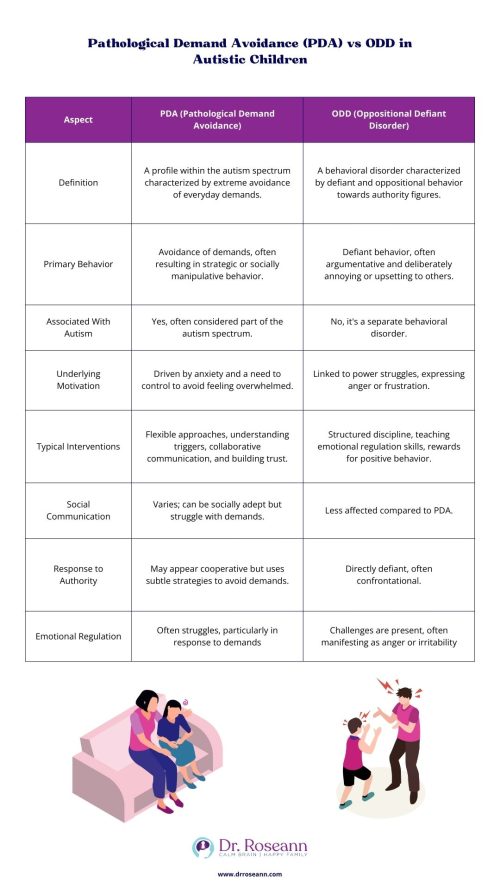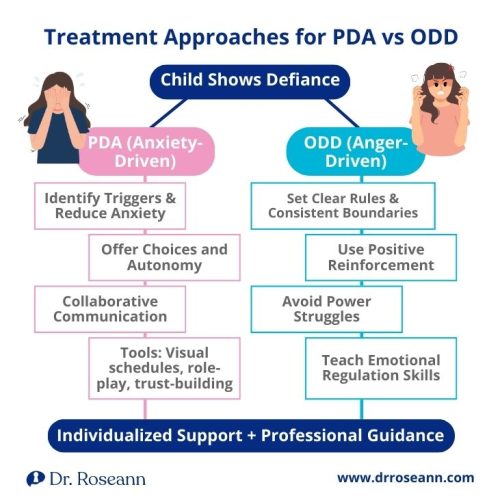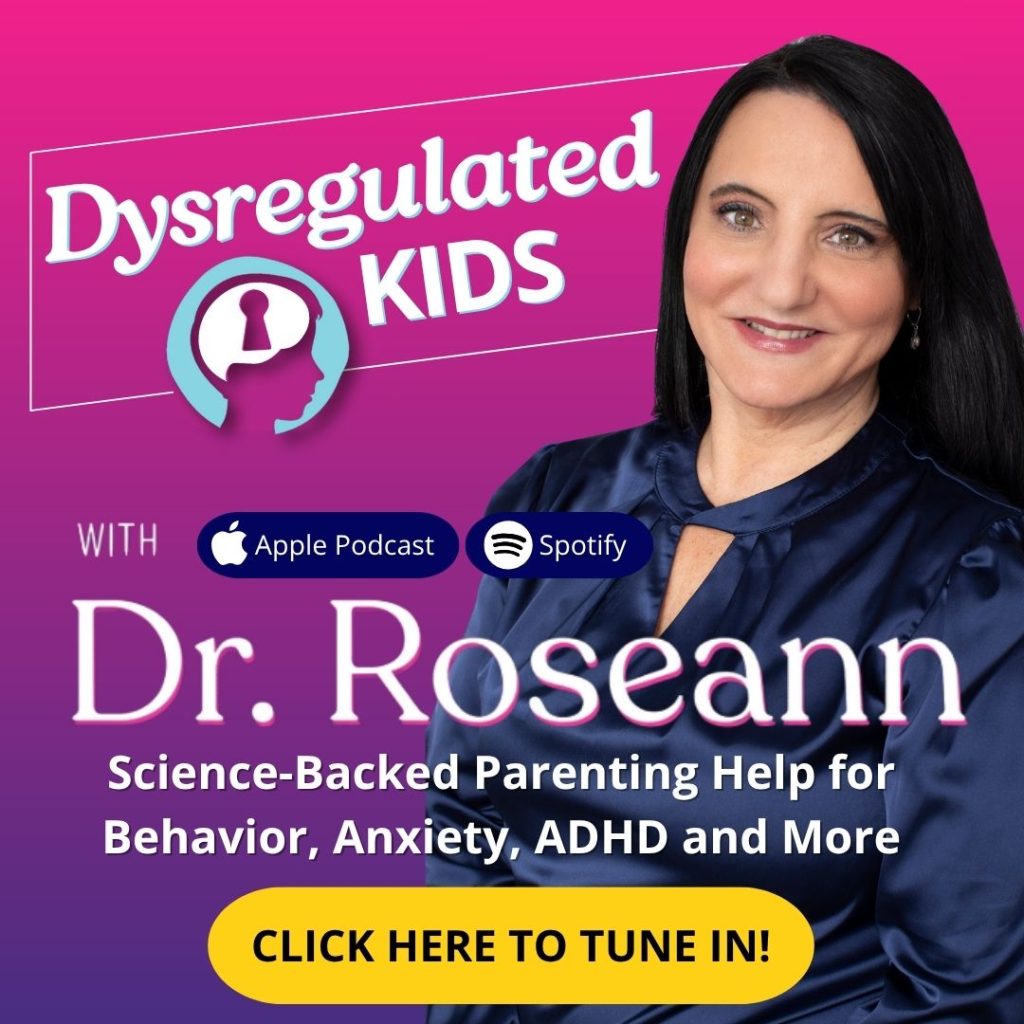Last week, a mom told me, “It took us 45 minutes and three meltdowns just to get out the door for school. I can’t tell if my son is being defiant or if he’s genuinely panicking.”
If this sounds familiar, you’re not alone. Parents of autistic children often face exhausting daily battles. These leave them questioning: Is this just defiance, or something deeper?
Two conditions—Pathological Demand Avoidance (PDA) and Oppositional Defiant Disorder (ODD). They can look very similar on the surface, but have very different roots.
Understanding the difference between pathological demand avoidance vs ODD isn’t just about labels. It’s about finding the right support strategies that actually work for your child.
In this guide, we’ll break down what makes PDA and ODD unique. Let’s explore treatments and share practical tools to help you bring more calm to your home.
What is Pathological Demand Avoidance (PDA)?
PDA is considered a behavioral profile on the autism spectrum. Kids with PDA experience extreme anxiety around everyday demands. What looks like stubbornness is actually a fear-driven need for control.
Children with PDA often:
- Resist even simple requests (like “please get dressed”).
- Use distraction, negotiation, or avoidance tactics.
- Experience meltdowns if they feel trapped or controlled.
- Struggle with social boundaries, despite appearing social.
Parent story:
Anne, mom of a 6-year-old with PDA, noticed that every morning turned into a shouting match over putting on socks. Once she realized his behavior wasn’t defiance but anxiety about losing control, she began offering him choices. Instead of “Put on your socks now,” she asked, “Do you want the blue socks or the red socks?” The battles decreased dramatically.
Is ODD the Same as Autism?
No. ODD is a separate diagnosis from autism. While PDA is tied to autism, ODD is a standalone condition.
- ODD traits: Persistent anger, irritability, and defiance toward authority figures.
- Situational: Defiance often happens with parents or teachers, but not always across all settings.
- Motivation: Power struggles, frustration, or testing limits—not anxiety.

What’s the Key Difference Between PDA and ODD?
The difference lies in motivation:
- PDA defiance = anxiety-driven fear of losing autonomy.
- ODD defiance = anger-driven opposition to authority.
As Dr. Elizabeth Newson, who first described PDA, noted:
“At the heart of PDA is an overwhelming need to avoid everyday demands, rooted in high anxiety.”
This means traditional discipline doesn’t work for PDA. Instead, kids need collaboration and trust.

How Do Treatments for PDA and ODD Differ?
PDA strategies:
- Build trust and safety first.
- Use collaborative problem-solving instead of commands.
- Offer choices and autonomy.
- Support regulation with tools like visual schedules, role-play, and calm communication.
ODD strategies:
- Use consistent discipline.
- Reinforce positive behaviors with rewards.
- Teach emotional regulation skills.
Parent story:
Tom’s 11-year-old son with ODD would yell and slam doors whenever asked to do chores. His therapist introduced a “point system” where chores earned privileges. Over time, Tom saw his son channel anger into words instead of explosions.

Can a Child Have Both PDA and ODD?
Yes. Some kids show traits of both, which can make life really confusing for parents.
A child might:
- Refuse schoolwork due to PDA anxiety,
- And later yell at a teacher out of ODD frustration.
This overlap requires a comprehensive evaluation by a mental health professional. Parents should document patterns of behavior across settings to share with clinicians.
What Parenting Strategies Actually Work?
For PDA kids:
- Stay calm and flexible.
- Turn demands into choices.
- Collaborate instead of command.
- Recognize that behavior is communication, not manipulation.
For ODD kids:
- Set clear rules and consequences.
- Avoid power struggles.
- Use positive reinforcement consistently.
- Teach coping and problem-solving skills.
Parent story: Lisa, mom of twins—one with PDA and one with ODD—had to use totally different approaches. For her PDA child, choices kept things calm. For her ODD child, structure and reward charts worked best. She often says, “Once I stopped treating them the same, life got easier.”
How Do I Know If My Child Has PDA or ODD?
If you’re unsure whether your child’s defiance is PDA, ODD, or both, here’s what to do:
- Track behaviors across settings (home, school, social).
- Notice the triggers—is it anxiety or anger?
- Seek a professional evaluation (psychologist, psychiatrist, or developmental pediatrician).
- Consider screening tools such as the Extreme Demand Avoidance Questionnaire (EDA-Q) for PDA.
Where Should Parents Start?
If your child is showing signs of PDA or ODD:
- Don’t blame yourself. It’s not “bad parenting”—it’s a dysregulated brain.
- Start small: add one new strategy at a time.
- Connect with professionals experienced in autism and behavior disorders.
- Remember: It’s gonna be OK.
You can help your child thrive by understanding pathological demand avoidance vs ODD. While PDA defiance is anxiety-based and ODD defiance is anger-based, both require empathy and individualized strategies.
Remember: Behavior is communication. By calming the brain first, you’ll create space for learning, connection, and healing.
Are you ready to take action? Download my Free PDA Parenting Checklist and start building a plan that works for your child!
FAQs About PDA vs ODD
Is PDA recognized as a diagnosis?
No, PDA is not a standalone diagnosis in the DSM-5. It’s seen as a profile within autism.
Can PDA exist without autism?
Some professionals believe so, but most agree PDA is usually linked to autism spectrum disorder.
What’s the difference between ODD and Conduct Disorder?
ODD involves oppositional behaviors, while Conduct Disorder involves serious rule-breaking like theft or aggression.
Do PDA symptoms continue into adulthood?
Yes, though they may look different. Adults may avoid work, social obligations, or responsibilities due to anxiety.
Terminology
- PDA (Pathological Demand Avoidance): A profile on the autism spectrum marked by extreme demand avoidance.
- ODD (Oppositional Defiant Disorder): A disorder involving persistent defiance toward authority figures.
- ASD (Autism Spectrum Disorder): A developmental condition affecting communication, behavior, and sensory processing.
- Extreme Demand Avoidance Questionnaire (EDA-Q): A screening tool used by professionals and researchers to identify traits of pathological demand avoidance in children and adolescents. It helps distinguish PDA behaviors from those linked to other conditions but is not a diagnostic tool on its own.
Citations
Newson, E., Le Maréchal, K., & David, C. (2003). Pathological demand avoidance syndrome: A necessary distinction within the pervasive developmental disorders. Archives of Disease in Childhood, 88(7), 595–600. https://adc.bmj.com/content/88/7/595
Woods, R. (2020). Pathological Demand Avoidance (PDA). In Encyclopedia of Autism Spectrum Disorders (Springer). https://link.springer.com/rwe/10.1007/978-1-4614-6435-8_102293-2
Sage Journals. (2025). Oppositional Defiant Disorder: Evidence‑Based Review of Behavioral Interventions. Advances in Clinical Practice, (Article). https://journals.sagepub.com/doi/10.12788/acp.0056
Always remember… “Calm Brain, Happy Family™”
Disclaimer: This article is not intended to give health advice, and it is recommended to consult with a physician before beginning any new wellness regimen. The effectiveness of diagnosis and treatment varies from patient to patient and condition to condition. Dr. Roseann Capanna-Hodge, LLC, does not guarantee specific results.
Are you looking for SOLUTIONS for your struggling child or teen?
Dr. Roseann and her team are all about science-backed solutions, so you are in the right place!
©Roseann Capanna-Hodge










